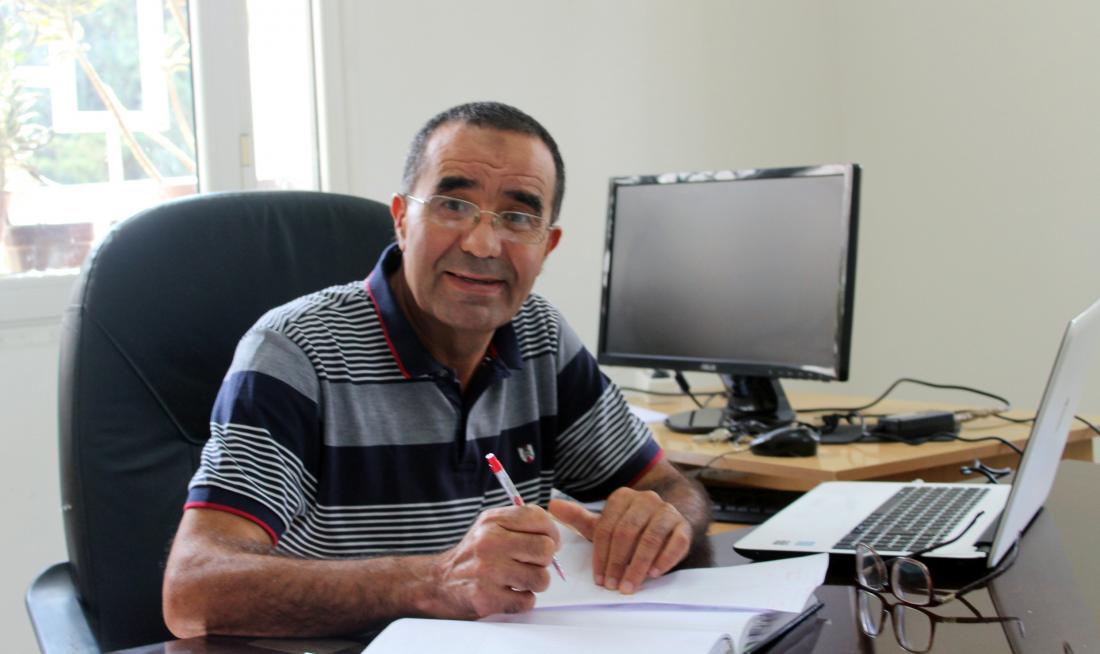FruitFlyNet-ii changes the way Medfly control is implemented in some areas of Tunisia

It is well known and broadly accepted that the overuse of chemical pesticides on agriculture has many disadvantages for the environment (residues, pollution), disturbing the biological equilibrium with a high cost for treatments. Therefore, the application of different ways to manage the Mediterranean FruitFly, Ceratitis Capitata, is constantly evolving and diversifying in order to find better ways for controlling it. The FruitFlyNet-ii project aims to achieve a better quality of crops, reduce the agricultural costs and provide healthier fruits to the consumers.
Professor Mohamed Braham, project local coordinator at the Regional Center of Horticulture and Biologic Agriculture, Sousse, Tunisia, informs us how FruitFlyNet-ii will change the way Medfly is treated so far in the country.
1- Professor, can you tell us more about the geographical distribution of Ceratitis Capitata?
- Well, the Medfly originating from East-central Africa, has invaded many countries worldwide, causing major economic losses for fruit farmers.. The extreme ability of the Medfly to adapt to a variety of environments along with multivoltinism (the characteristic of a specie having several broods or generations in a year) and polyphagy (the ability of a specie to eat a variety of food (e.g. several different families of plants) renders this fly a major threat for fruit production. We can say this pest prefers relatively warm and dry climates. Its first find up in Tunisia was in 1885 according to the EPPO (European and Mediterranean Plant Protection Organization) Standards, 1996. It exists in the Middle East, Africa, Europe, Pacific and USA.
2- In Tunisia specifically, can you tell us about the host plants and the damage inflicted by the Ceratitis Capitata?
In Tunisia, the Medfly adults are present all year around but its population decreases in February-early March. However, larvae are present in oranges and rough lemon cultivars. In April, emerging adults attack loquat fruits, then fruits of maturing like apricot and peaches. During the summer, the insect attacks maturing varieties of peaches, figs, Ficus carica, prickly pears. In the autumn, Medflies attack pomegranates, apples, pears and then citrus beginning with early maturing citrus such as Clementine and Citrus sinensis cv Thomson and finally during the winter the fruits of Citrus sinensis cv Maltaise are attacked.
3- From the test carried out in Mabrouka society (FruitFlyNet-ii pilot area in Tunisia, located in Ben Arous, Khlidia), can you explain the cycle of Ceratitis Capitata in the peach orchard or the stimulating experiment installed in the citrus orchard in CRRHAB orchards located in Sousse, Chott-Mariem?
The experiment conducted in the Mabrouka company aims to the setup of a Decision Support System (DSS) to manage the Medfly. So, 24 conventional Delta traps were setup in a peach orchard with different varieties for studying the population dynamic of the insect and decide where and when to treat. Traps and fruit infestation were inspected every week and the data collected feed the DSS.
Because of the presence in the same orchard of different period of maturing peach varieties (from May to October), the insect jump from a cultivar to another to look for susceptible fruits.
4- Can you provide us with a general idea of the existing means of control and fight against ceratitis in Tunisia?
In the country, the control and fight of the Med fly is mainly done by using chemical pesticides. Several types of insecticides are authorized t. But generally treatments were done by cover spray which means that all trees are sprayed causing needless use of pesticides and increasing costs. In this project, we will try to use bait spray which means that we treat a part of a tree or only some rows of the orchards, attempting to attract the insect before ingesting insecticide inducing mortalities.
5- What are your prospects within FruitFlyNet-ii project and the Digital agriculture?
We expect to use new technology for precision and smart agriculture. The idea is to take advantage of insect trapping using electronic traps, to collect remotely data relating to insect capture, meteorological data (temperature and relative humidity) and decide when and where to treat reducing the amount of pesticide used and saving the environment.









